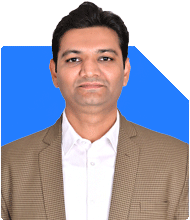Ramalingam Kalirajan |8940 Answers |Ask -Follow
Mutual Funds, Financial Planning Expert - Answered on May 18, 2024
He has an MBA in finance from the University of Madras and is a certified financial planner.
He is the director and chief financial planner at Holistic Investment, a Chennai-based firm that offers financial planning and wealth management advice.... more

Hi, I am 40 years old. Is it advisable to buy a flat worth 2cr with 80% bank loan and give it for rent. Expected rent is 60k per month. Or should I build a corpus of 2cr. For my retirement life.
Setting up an SWP in Mutual Funds
Advantages:
Flexible Withdrawals:
With an SWP, you have the flexibility to withdraw a fixed amount at regular intervals, providing a steady stream of income to support your financial needs, including retirement planning.
Diversification Benefits:
Mutual funds offer diversification across various asset classes, reducing concentration risk and potentially enhancing long-term returns compared to investing solely in real estate.
Professional Management:
Mutual funds are managed by professional fund managers who actively monitor and adjust the portfolio based on market conditions, aiming to optimize returns while managing risk.
Tax Efficiency:
SWP withdrawals from mutual funds may enjoy tax benefits, especially if held for the long term, with certain equity funds qualifying for capital gains tax exemption after a holding period of one year.
Buying a Flat for Rental Income
Advantages:
Stable Rental Income:
Renting out a flat can provide a stable source of income, which may be attractive for covering ongoing expenses or supplementing other sources of income.
Tangible Asset:
Owning real estate provides tangible asset ownership, offering potential capital appreciation over time and serving as a hedge against inflation.
Portfolio Diversification:
Real estate investments add diversification to your overall portfolio, reducing risk by spreading investments across different asset classes.
Disadvantages:
Liquidity Constraints:
Real estate investments are relatively illiquid, making it challenging to access funds quickly if needed, especially during emergencies or market downturns.
High Initial Investment:
Buying a flat requires a significant upfront investment, typically financed through a substantial bank loan, which may strain your finances and limit investment diversification.
Maintenance Costs:
As a landlord, you'll be responsible for ongoing maintenance, repairs, and other associated costs, which can erode rental income and impact overall returns.
Conclusion
Given the advantages of SWP in mutual funds, such as flexibility, diversification, professional management, and potential tax benefits, it may be a more suitable option for generating regular income and building a retirement corpus. However, it's essential to assess your risk tolerance, investment goals, and financial situation carefully before making a decision. Consider consulting with a Certified Financial Planner to develop a personalized financial plan aligned with your objectives and aspirations.
Best Regards,
K. Ramalingam, MBA, CFP,
Chief Financial Planner,
www.holisticinvestment.in
You may like to see similar questions and answers below
Ramalingam Kalirajan |8940 Answers |Ask -Follow
Mutual Funds, Financial Planning Expert - Answered on May 17, 2024
Samkit Maniar | Answer |Ask -Follow
Tax Expert - Answered on May 26, 2024
Ramalingam Kalirajan |8940 Answers |Ask -Follow
Mutual Funds, Financial Planning Expert - Answered on Jan 06, 2025
Dr Dipankar Dutta |1602 Answers |Ask -Follow
Tech Careers and Skill Development Expert - Answered on Jun 19, 2025
Dr Dipankar Dutta |1602 Answers |Ask -Follow
Tech Careers and Skill Development Expert - Answered on Jun 19, 2025
Dr Dipankar Dutta |1602 Answers |Ask -Follow
Tech Careers and Skill Development Expert - Answered on Jun 19, 2025
Dr Dipankar Dutta |1602 Answers |Ask -Follow
Tech Careers and Skill Development Expert - Answered on Jun 19, 2025
Dr Dipankar Dutta |1602 Answers |Ask -Follow
Tech Careers and Skill Development Expert - Answered on Jun 19, 2025
Dr Dipankar Dutta |1602 Answers |Ask -Follow
Tech Careers and Skill Development Expert - Answered on Jun 19, 2025
Dr Dipankar Dutta |1602 Answers |Ask -Follow
Tech Careers and Skill Development Expert - Answered on Jun 19, 2025
Dr Dipankar Dutta |1602 Answers |Ask -Follow
Tech Careers and Skill Development Expert - Answered on Jun 19, 2025
Vipul Bhavsar |93 Answers |Ask -Follow
Tax Expert - Answered on Jun 19, 2025
Vipul Bhavsar |93 Answers |Ask -Follow
Tax Expert - Answered on Jun 19, 2025





















